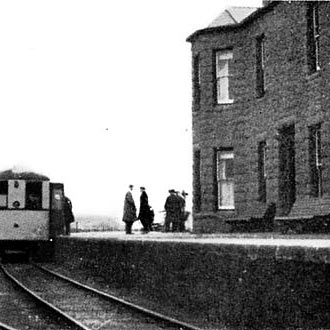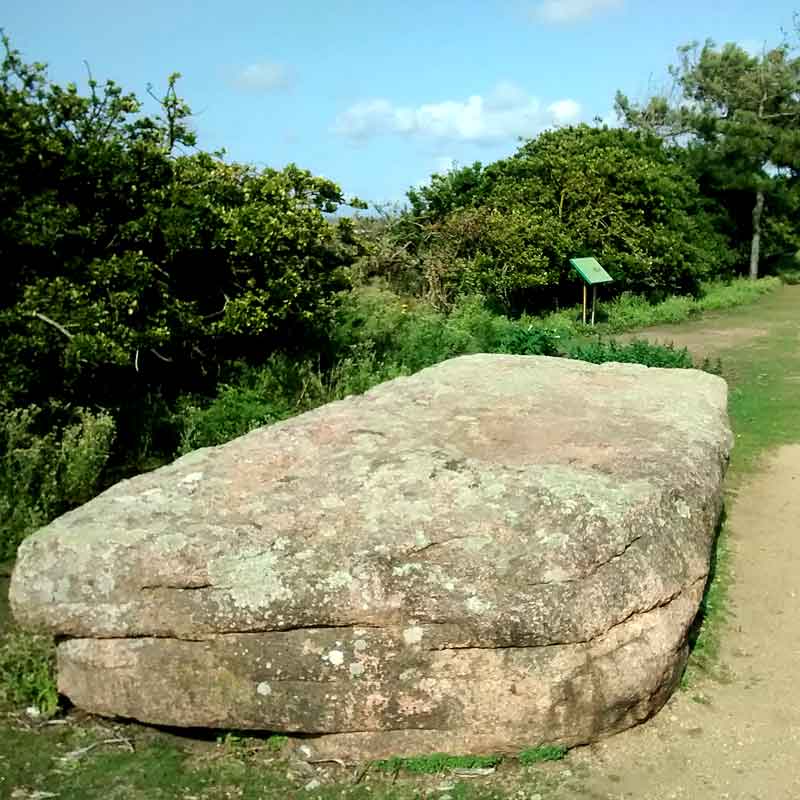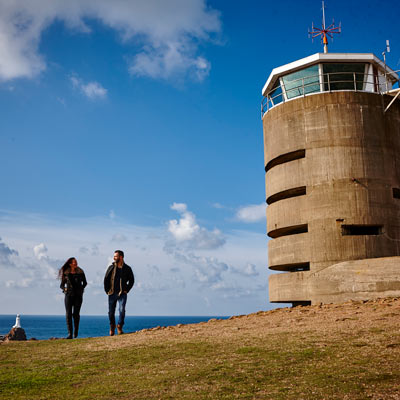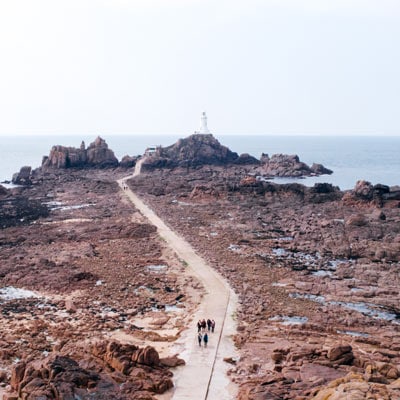Picturesque Walk to Corbiere Lighthouse
The Corbiere Lighthouse walk is approximately 45 minutes and will take you to Corbiere Lighthouse, one of the island’s most iconic, and indeed most photographed, landmarks. Apart from its glorious setting, it also has the distinction of being the first concrete lighthouse to be built in the British Isles.
This walk is nearly all off road, apart from a short stretch of roadside walking in the middle of the route.
PLEASE BEWARE OF THE TIDES –
We are said to have the third largest tides in the world, so please check a tide table before exploring the coastline!
Click here to check the latest Jersey tide times
Mileage: 1.6 miles / 2.5 kilometres to get there
Time: 45 Minutes
Elevation range: 150 feet / 45 metres
Bus Route: 12 (to Greve de Lecq) and 22 (to L’Etacq) will take you back to the hotel
Expect a mixture of tarmac, cliff path, gravel railway path and concrete.
Walking Directions
Leave the hotel, and make your way to the main road, Le Mont de la Pulente. Cross over into Parcq de L’Oeilliere and turn right (the road has ‘No Entry’ marked on it). Follow the road through the estate and take the second right.
Walk on beyond the tarmac; soon we are on the headland that separates Petit Port from St Ouen’s Bay and a great panoramic view of the other islands can be seen to your right. Follow the track ahead, the Neolithic dolmen of La Sergenté can be found on the high ground over to the left.
Walking Directions continued…
Return to the main track, and walk on. Near a drain cover, where we have a choice of routes, turn left to descend through a wooden barrier. Follow this sandy path as it makes its way downhill. When it meets another sandy path at right angles, turn left. Continue along the path. On reaching tarmac again, turn left and climb a slight hill (Le Chemin de Petit Port) to the road.
At the yellow line turn right, and walk along the road. The rocky foreshore below is home to a number of Little Egrets. Just after a rocky outcrop, a foot path sign appears on the left-hand side of the road, follow the sign up several wooden steps.
When the path emerges onto a wider gravel track, turn right. This is the old route of the Jersey Rail and Tram Company.
Walking Directions continued…
As we approach the granite railway terminus, we pass a large granite capstone on our right. This is called La Table des Marthes.
Walking Directions continued…
The structure on our left was once the railway platform. Immediately before the terminus building is a short flight of steps, walk up these and cross the car park to the road. Taking care; cross the road and bear left towards the concrete tower ahead. This was a range-finding tower built by the Germans during the Second World War.
Walking Directions continued…
Leave the tower, and cross the scrubland towards the rocky outcrop beside the road. On reaching the road turn left and descend to the car park. A magnificent view of the lighthouse can be seen from this vantage point.
To return to the hotel, you can either retrace your walking route or use one of the following:
Bus Route:
22 (to L’Etacq)
Get on at the bus stop alongside the old railway station and ask for The Atlantic Hotel. Click here for the full timetable.
Taxi:
Domino Cabs are based in St Brelade – Telephone: +44 (0) 1534 747047





